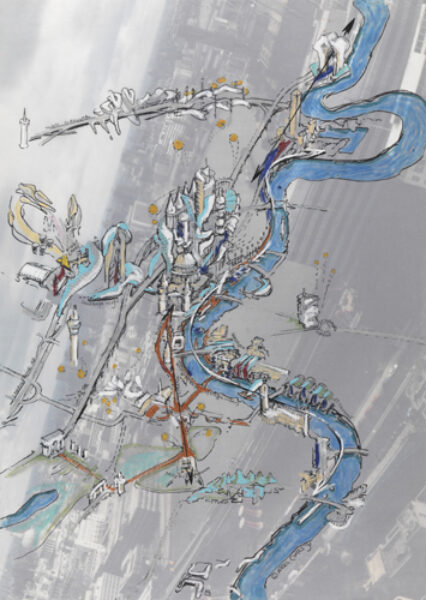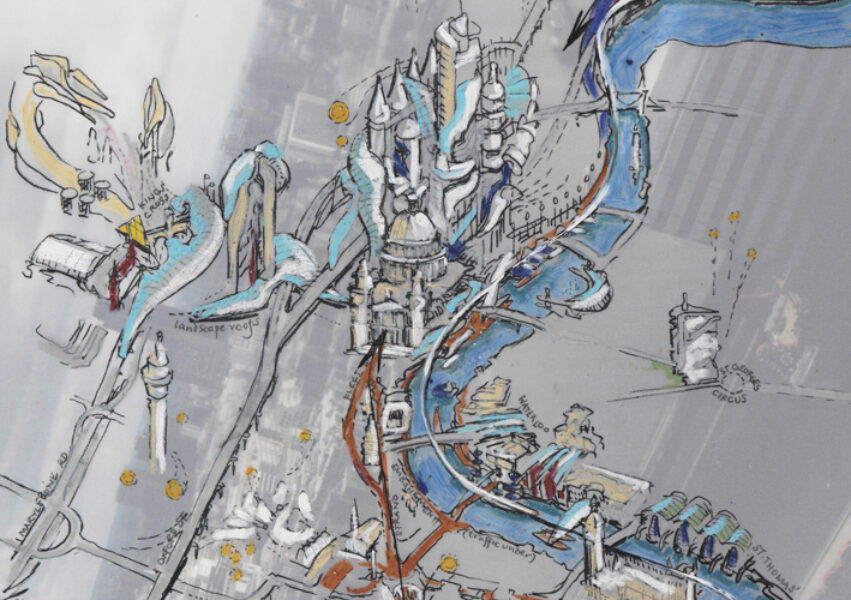London 2066
A Celebration: 75 years of British Vogue
In London now, 2066AD and one millennium after William the Conqueror, there are no monuments as such but soft-monuments, parts of the city that work as urban icons with their activity, process and light. The City has become an agglomeration of shining steel towers of light jammed in among the nineteenth-century Florentine palaces that used to be banks. After the disastrous efforts of architects in the last century, recent developments have pushed London forward as the capital of north-western Europe. Mediocre twentieth century buildings have been replaced by Neuromancer medievalism. No longer a museum, the city is both living history and living future. The building vocabulary has consolidated as an open framework, into which specific volumes like pods or cells can be inserted artificial landscape structures, mushroom buildings attached to control cores, and missile-like spires which often appear to grow into one another. Streets are no longer just routes for traffic; they are public spaces that handle all speeds of movement from strolling to laser cycling at Mach1. Elevated guide ways lift travellers over historic sections of the city such as Oxford Street and Marylebone Road, which have virtually become parks thanks to the membranes that fill the gaps between buildings with their organic sensor mechanisms. Familiar now, these skins were not introduced until the Olympics held here eighteen years ago. Most major railway stations have become museums. The Tate Gallery has been transferred to Buckingham Palace which is now known as the Tate Buckingham, or TB. King Charles gave up the Palace as part of a handover of royal residences to the nation to celebrate the bimillenary. Along with a handful of architects taken up by the TB, Richard Rogers has become a national hero. Several of Rogers schemes have been built since he died, including his slice-of-cake City Museum at St Georges Circus and his revitalised North Embankment, first presented over eighty years ago at a Royal Academy exhibition. It is hard to imagine that this vital terrace was once full of traffic belching out fumes. Now you can take networked minifoils to the fifty-two islands that form a plankton spread from Westminster to Canary Wharf. Soft and skeletal structures form a network of civic buildings. People travel outwards rather than inwards for their leisure. Mediocre development on the Circular roads concentrate nightclubs, bars and other ephemera in a doughnut of low-cost building encircling central London. Although London never had, and never wanted, the grand planning of Rome or Paris, the processional route from TB to St Pauls has taken on a new meaning. Lined with bars and cafs, it is the citys principle boulevard. At the Isle of Dogs junction with the Circular, a new gateway building has been based on the Henry Moore in Kensington Gardens. This provides a European focus to the two urban axes through London, the one generated by St Pauls through the Strand to the Mall, and the Thames Londons only truly large set piece. Nigel CoatesNext: White Post Gallery

